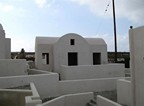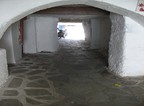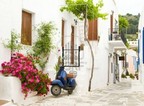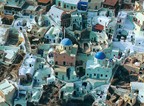Cycladic architecture has greatly influenced Greece in so many ways. Its uniqueness and also the charm are some of the remnants that are still remembered today and also widely used in many places as well as modern building structures. In most cases they can be seen in the rapid growing tourist sector where most newly constructed hotels and restaurants are strongly using the architectural ideas from medieval times to further give tourists a taste of ancient culture and civilization. The reputations of these architectural designs are still well recognized and continue to spread further to Greece borders.
if you happen for the first time to visit towns or villages of the Cycladic Islands, you may be surprised by the kind of culture you will find there. Actually, you might think you have gone back to medieval times. According to scholars Cycladic architecture mainly used simple but daring style. This is the distinguishing factor from the Cycladic art created by some artists like 5000 years before. They bear instincts of those folk artists and their untaintedness. The craftsmanship used in buildings gave the buildings their grace and beauty. It clearly showed the best of Cycladic landscape.
Very few people get the opportunity to come across the public squares of these Cycladic villages. Even the small public spaces in settlement areas are not a hindrance. Streets are the most common areas with well balanced exceptional building facades. Most of these streets are paved with beautiful whitewash outlined rectangular or polygonal flagstones. Patterns of these flagstones are adapted to fit the outsides of the buildings. These are the main two styles which are broad facades and narrow facades.
On the other hand, those buildings on same block or cluster are highly likely to have the same style together with other similar features. In this case, broad or narrow faade houses have almost the same dimensions and designs. Mostly, these houses are two storied with outside staircase allowing separate access to upper storey when coming from the streets.
Outside staircase is a common feature irrespective of whether or not the house is being used as two separate families each individually owning upper storey and ground floor or whether it is just a single family dwelling. In most cases separate ownership of the floors individually is a popular resort that many consider. It is also the Cycladic tradition and dates many centuries back. This started due to lack of adequate space in the fortified settlement area built in later parts of 14th century when the settlements were first established.
Later on, ownership of separate stories continued to thrive even with the pirate incursion after the Battle of Lepanto which took place in 1571. In this time settlements spread beyond the walls. It is strongly affirmed that the reasons for this was for serving the institution of dowry. However separate ownership of storey did satisfy some other needs also. For example, in Mykonos peasants used it for storage and shelter when they went to town to trade their wares among other marketing needs. Essentially they purchased the ground floors from locals. Cycladic architecture building exteriors are rather simple. They economize the spaces ensuring ingenuity by natives. Moreover, the single storied buildings blended with the church facades, windmills, dovecotes and fountains composing a picture that has never been seen elsewhere in the world.
Cycladic architecture buildings forming irregularly aligned houses and compact mass houses, economic curves use and walls slanting outwards to the ground give a great impression of the building growing out of stark rocky ground of the island. Adding a painted door, balconies and windows contrasting these stark white houses brings the full picture of Cycladic architecture.
However, this is only a general picture. Every island has a unique characteristic which is determined by both topography and history. Also, the availability of local materials also plays a major role. Interiors of these houses are the same. There are only few cases where there is a variation from the Cycladic architecture in one island to the other.
Mostly, the inside sections are divided in unequal sections two in number by a platform. The platform is 3 meters wide tops and extends the length of the house or the width of the house.
The platform has varied names ranging from krevatos meaning bed, sofas meaning couch and kraatos also meaning couch. The names differ with the location. Furnishings in this Cycladic architecture are very impressive and amazing. They enhance the beauty of the house and complement well the usefulness or refinement of the house to give the best harmony with the house’s architecture and decoration.
Interior decor is made up of trucks for storing clothing, icon stands, wardrobes, water jug stand and wooden carved chests and other varieties of furniture that are built into these walls.
In most cases this is combined with pebble paved exterior yards which basically add more grace to an otherwise stark harmonious construction. The general impact of the Cycladic architecture is that it ensures the houses are very unique unlike any other in the world. It is this uniqueness that makes Greece a great tourist destination.
Greece essentially gives you the opportunity to sample out the best housing in the medieval times and get to live in them for as long as your vacation lasts. The most important aspect of the vacation is getting to spend the best times of your life sampling the best Cycladic architecture that existed in the ancient times. Most of these architectural ideas are still in use today in some parts of Greece for instance. In the course of your holiday in the country, you should at least take a break from the usual comforts provided by the modern architectural designs. Enjoy the fine Cycladic architecture which has been fused with modernity to give a rare design feature. You will be one of the very few people who have had to spend even a night in these great ancient Cycladic designs that still stun the world. When you visit Greece do not forget to get a taste of the ancient architecture.




